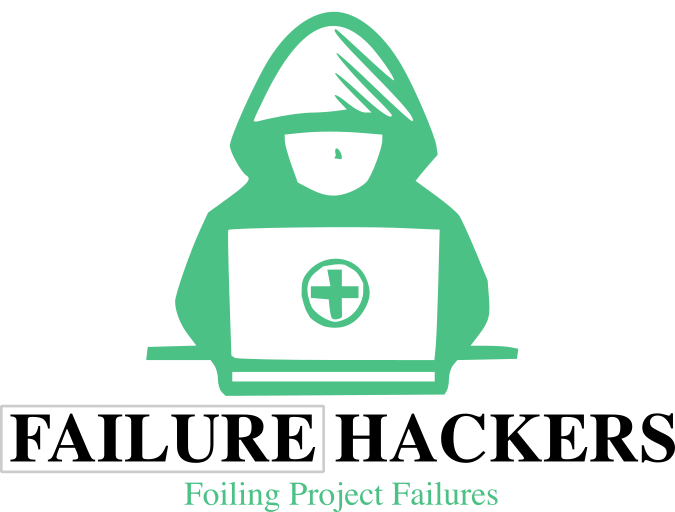To improve your problem solving, there’s no avoiding the word ‘problem’ and for us as failure-hackers then we need to dissect what is a problem.
A “problem” can be broadly defined as a situation, condition, or issue that is perceived as undesirable or deficient compared to a more desirable, ideal state. It represents a discrepancy between the current state of affairs and a desired or expected state. Problems can arise in various contexts, including scientific, mathematical, social, personal, and professional domains.
Define a problem
To inform our thinking, what does academia define a problem as:
Psychological Perspective: In psychology, particularly in cognitive psychology, a problem is often viewed as a mental construct. A person encounters a problem when there is an obstacle in the way of achieving a specific goal, and the solution is not immediately apparent. This field studies problem-solving as a mental process, involving perception, memory, and reasoning.
Philosophical Perspective: Philosophers like Karl Popper have discussed problems in the context of scientific inquiry and knowledge. Popper proposed that scientific knowledge progresses through a process of conjectures and refutations, where scientists propose hypotheses (potential solutions to problems) and then attempt to falsify them. This perspective views problems as central to the advancement of knowledge.
Mathematical and Logical Perspective: In mathematics, a problem is typically a question with an unknown answer that requires a process of logical and mathematical reasoning to be solved. This perspective emphasizes the role of logical structure and deductive reasoning in problem-solving.
Sociological Perspective: Sociologists view problems in the context of societal issues. These are often complex, involving multiple stakeholders with differing perspectives and interests. Such problems might include inequality, crime, or environmental degradation. Solutions require collective action and policy interventions.
Examples of problems
Now here are some examples of problems in different domains:
The essence of a problem lies in the gap between the current state and a desired state, and the challenge involved in bridging that gap.
1. Scientific Problem: A scientist trying to understand an unexplained natural phenomenon, like the behavior of a newly discovered particle in physics.
2. Mathematical Problem: A mathematician trying to prove a theorem or solve an equation where the method of solution is not immediately apparent.
3. Social Problem: Issues like poverty or social inequality, where the current societal state is deemed undesirable compared to a more equitable situation.
4. Personal Problem: An individual facing a dilemma, such as choosing a career path, where the best course of action is unclear.
5. Professional Problem: In a business context, this could be a company facing declining sales, where the solution involves identifying and addressing the underlying causes.
In all of these examples, the essence of a problem lies in the gap between the current state and a desired state, and the challenge involved in bridging that gap. The nature and complexity of problems can vary greatly, and thus, the approaches to problem-solving are diverse and context-dependent.
The impact of problems
The impact of problems on individuals, teams, organisations, and businesses is multifaceted and can vary in scale and intensity depending on the nature of the problem, the context, and the resilience of the affected parties. Here’s a detailed view of these impacts:
Problems present both challenges and opportunities at various levels of an organisation
Impact on Individuals
- Stress and Mental Health: Problems, particularly those that are complex or persistent, can lead to increased stress and anxiety. This can have a significant impact on an individual’s mental health and overall well-being.
- Skill Development: On the positive side, encountering and solving problems can lead to personal growth and development. It enhances critical thinking, creativity, and problem-solving skills.
- Performance and Productivity: Problems can hinder an individual’s ability to perform effectively, reducing productivity. Conversely, successfully solving problems can boost confidence and efficiency.
- Career Trajectory: Persistent or unresolved problems might lead to career stagnation or a negative reputation, whereas successfully handling complex issues can lead to career advancement.
Problem impact on Teams
- Team Dynamics and Morale: Problems within a team, such as interpersonal conflicts or misalignment of goals, can negatively affect team dynamics and lower morale. Effective problem-solving can strengthen team cohesion.
- Collaboration and Communication: Problems often necessitate improved communication and collaboration within a team. Teams that solve problems together can develop stronger bonds and better communication skills.
- Innovation and Learning: Teams facing unique problems are often pushed to think creatively and innovate, leading to a culture of continuous learning and improvement.
Problem impact on Organisations
- Organisational Culture: The way an organisation handles problems can significantly impact its culture. A culture that positively approaches problem-solving can lead to higher employee engagement and a more adaptable organisation.
- Reputation and Trust: External problems, such as public relations crises, can affect an organisation’s reputation. Effective management of such problems is crucial in maintaining trust among stakeholders.
- Financial Health: Problems related to operations, finance, or strategy can have direct implications on the organisation’s bottom line. Timely and efficient problem-solving is critical to maintain financial health and sustainability.
- Strategic Direction: organisational problems often necessitate a reevaluation of strategies and objectives, potentially leading to significant shifts in direction and priorities.
Problem impact on Business
- Market Position and Competitiveness: Businesses facing industry or market problems must adapt quickly to maintain their competitive edge. This might involve innovation, restructuring, or strategic pivots.
- Customer Satisfaction and Loyalty: Problems that affect product quality or customer service can lead to a loss of customers and market share. Effective problem resolution is key to retaining customer loyalty.
- Supply Chain and Operations: Operational problems can disrupt supply chains and production, leading to delays and increased costs. Businesses need robust problem-solving mechanisms to minimize disruptions.
- Growth and Expansion: Persistent or significant problems can hinder a business’s ability to grow and expand. Conversely, businesses that effectively solve problems can capitalize on new opportunities for growth.
In conclusion, problems present both challenges and opportunities at various levels of an organisation. How individuals, teams, and organisations approach and resolve these problems can have a profound impact on their success, growth, and sustainability.
Positive aspects to encountering problems
Encountering problems, despite often being viewed negatively, can yield several positive outcomes. These benefits can be observed at various levels, from individuals to entire businesses.
Positive aspects for Individuals
- Skill Development: Solving problems helps individuals develop critical thinking, creativity, and problem-solving skills. It also enhances abilities such as resilience, adaptability, and emotional intelligence.
- Personal Growth: Overcoming challenges can lead to personal growth. Individuals often discover new strengths and capabilities, boosting their self-confidence and self-efficacy.
- Career Advancement: Successfully navigating complex problems can lead to recognition, career advancement, and leadership opportunities. It demonstrates an individual’s capability to handle responsibility and complexity.
- Innovation and Creativity: Problems often require innovative and creative solutions, encouraging individuals to think outside the box and be more inventive in their approach.
Positive aspects for Teams
- Improved Team Dynamics: Working together to solve problems can strengthen team bonds, improve communication, and foster a sense of camaraderie and trust among team members.
- Collective Learning: Teams learn collectively as they solve problems. This shared learning experience contributes to the team’s overall knowledge and expertise.
- Enhanced Collaboration: Problems often require team members to collaborate more closely and leverage each other’s strengths, leading to a more cohesive and effective team.
- Conflict Resolution Skills: Teams that encounter and resolve internal conflicts or challenges can develop strong conflict resolution skills, beneficial for future team dynamics.
Positive aspects for Organisations
- Organisational Resilience: Encountering and overcoming problems can build organisational resilience, preparing the organisation to better handle future challenges.
- Cultural Development: An organisation that effectively deals with problems often cultivates a positive culture that values learning, adaptability, and employee empowerment.
- Innovation and Improvement: Problems can be catalysts for organisational innovation and continuous improvement, leading to more efficient processes, better products or services, and new business opportunities.
- Strategic Refinement: Problems often highlight areas needing strategic change or improvement, leading to a more focused and effective organisational strategy.
Positive aspects for Businesses
- Competitive Advantage: Businesses that effectively solve problems can gain a competitive advantage by being more adaptable and responsive to market changes.
- Market Leadership: By solving industry-specific problems, a business can position itself as a market leader, setting standards and best practices for others to follow.
- Customer Satisfaction and Loyalty: Effective problem resolution, particularly in customer service, can lead to increased customer satisfaction and loyalty.
- Growth and Expansion: Successfully navigating business challenges can open up new markets, customer segments, and opportunities for growth and expansion.
In summary, while problems are often seen as obstacles, they also provide significant opportunities for development, learning, and improvement at individual, team, organisational, and business levels. The ability to effectively solve problems is a key driver of success and innovation in today’s dynamic environment.
The ability to effectively solve problems is a key driver of success and innovation in today’s dynamic environment.
Negative aspects to encountering problems
Encountering problems can also have negative impacts, affecting individuals, teams, organisations, and businesses in various challenging ways.
Problems, while a natural part of any individual, team, organisational, or business experience, can have significant negative impacts if not managed effectively.
Negative aspects for Individuals
- Stress and Anxiety: Problems, especially complex or persistent ones, can lead to significant stress and anxiety. This can impact mental health, leading to issues like burnout or depression.
- Overwhelm and Reduced Productivity: Individuals facing multiple or difficult problems might feel overwhelmed, which can reduce focus, efficiency, and productivity.
- Impaired Decision-Making: Under the pressure of problems, individuals may make hasty or poor decisions, potentially exacerbating the situation.
- Impact on Personal Life: Work-related problems can spill over into personal life, affecting relationships and overall life satisfaction.
Negative aspects for Teams
- Conflict and Tension: Problems can lead to conflicts within teams, especially if there are differing opinions on how to address the issue, leading to tension and a hostile work environment.
- Reduced Morale and Motivation: Persistent problems or a lack of effective solutions can demoralize a team, leading to reduced motivation and job satisfaction.
- Inefficiency: Teams preoccupied with problems may become less efficient, as time and resources are diverted from regular tasks to address the issue.
- Communication Breakdown: Problems can lead to breakdowns in communication if team members become frustrated or start to withhold information from each other.
Negative aspects for Businesses
- Market Position and Competitiveness: Problems that are not effectively addressed can lead to a loss of market position and competitiveness, as the business may fail to keep up with market changes and customer needs.
- Innovation Stagnation: Constant firefighting and dealing with problems can take away focus from innovation, leading to stagnation in product or service development.
- Customer Loss: Businesses that fail to solve problems effectively, particularly those affecting product quality or customer service, risk losing customers to competitors.
- Operational Disruptions: Problems in the supply chain, manufacturing, or service delivery can lead to operational disruptions, affecting the business’s ability to function effectively.
Problems, while a natural part of any individual, team, organisational, or business experience, can have significant negative impacts if not managed effectively. These impacts can range from personal stress and team conflict to financial losses and strategic setbacks for organisations and businesses.
So what?
You now know what a problem is from many angles so that you are better equipped to spot a problem in the wild.
You can see the impact that a problem can have not only on the team but also for the organisation, possibly your part of the organisation but also potentially on the organisation as a whole.
You are versed now in the negative aspects of problems and how they can affect the organisation, the business and most importantly the individual impacts that can manifest as stress, anxiety, conflict and loss of productivity.
The positive aspects of tackling problems are also now in your toolkit. Working together to hopefully solve a problem, the increased motivation and recognition it can bring, the collaboration it entails.
For organisations having the capability and culture to tackle problems brings with it greater resilience to handle challenges. The creativity and collaboration can bring innovation and growth in new ways to the business that can take it to the next level.
So now you can approach your next problem with this new set of insights and perspectives at your disposal.
Read on below to learn more about the symptoms you might see in tackling problems…





